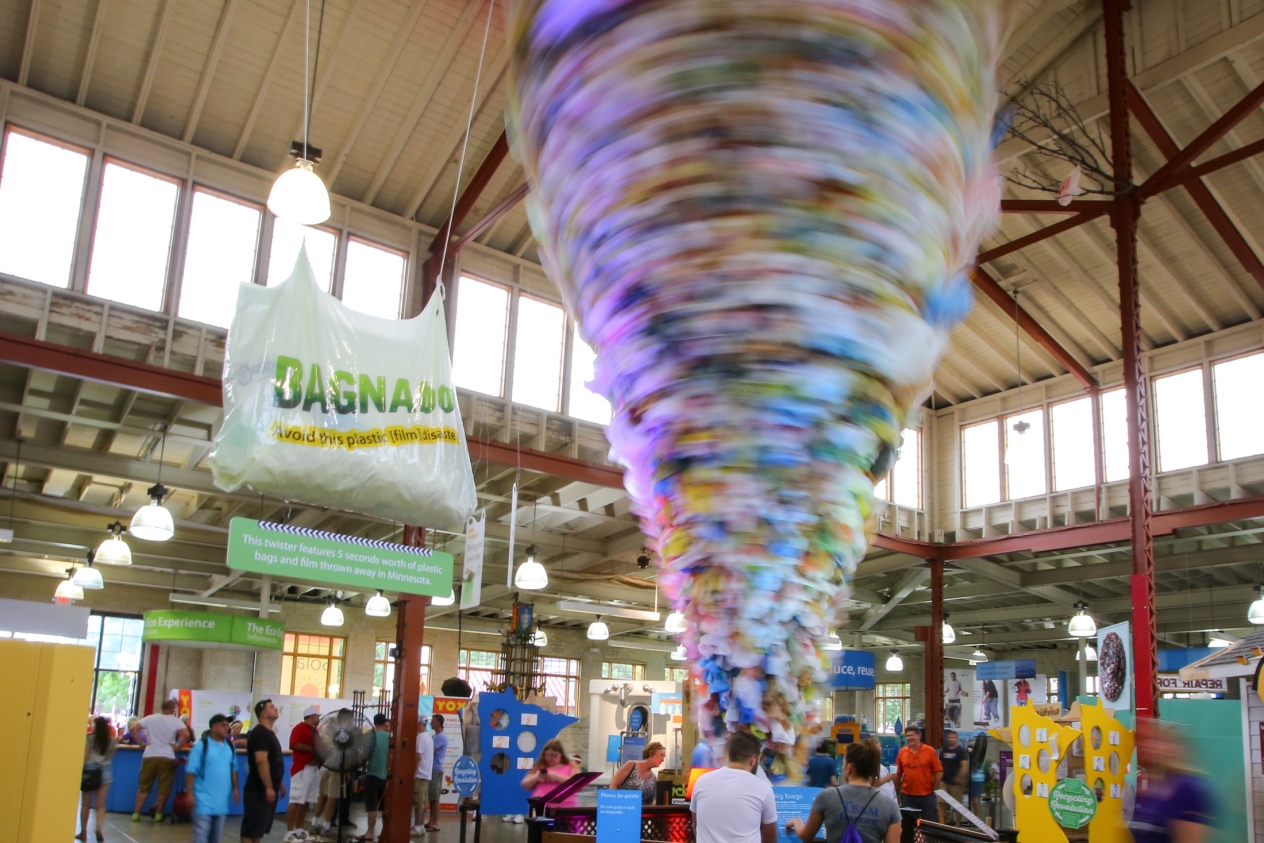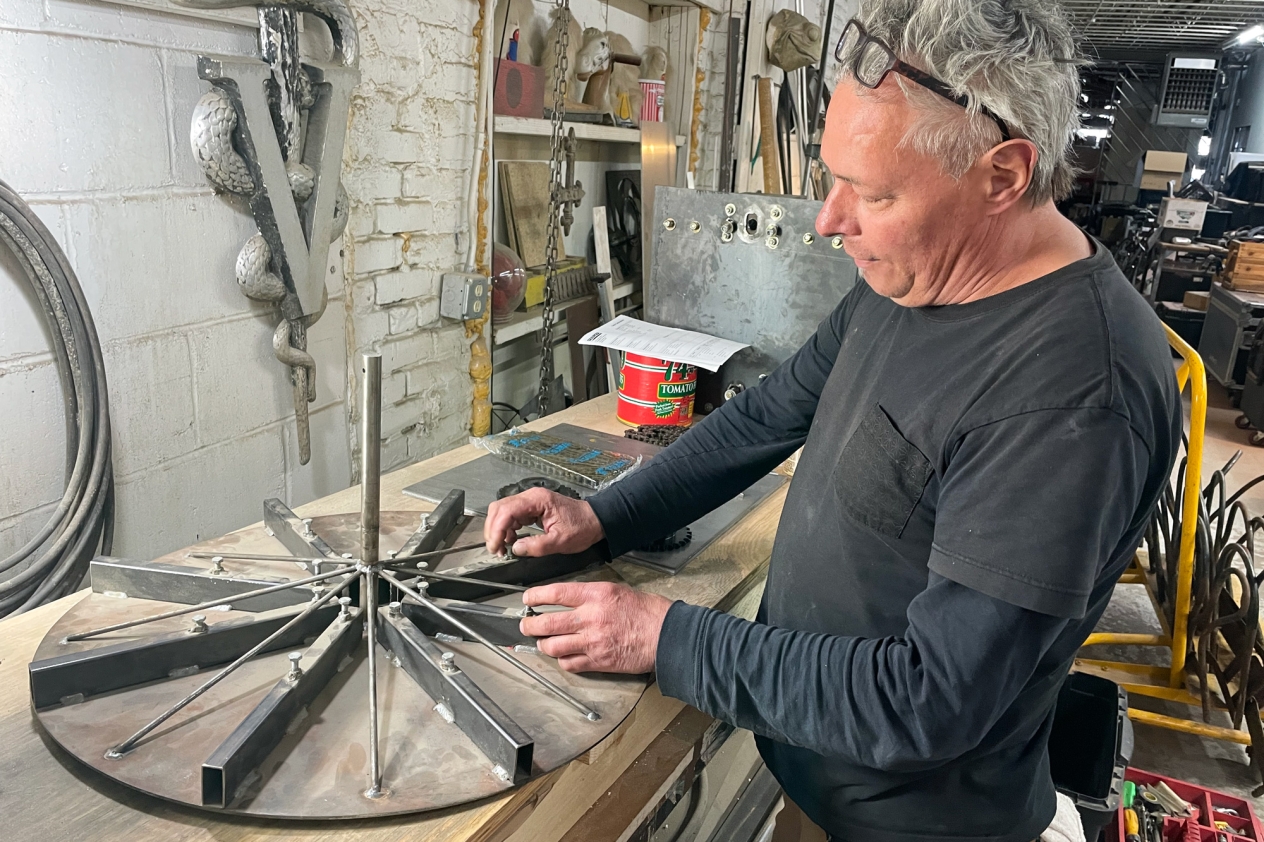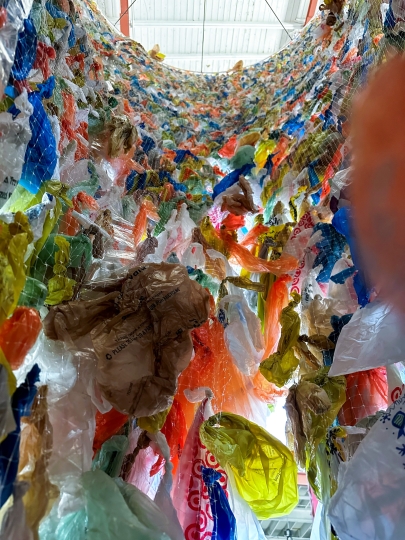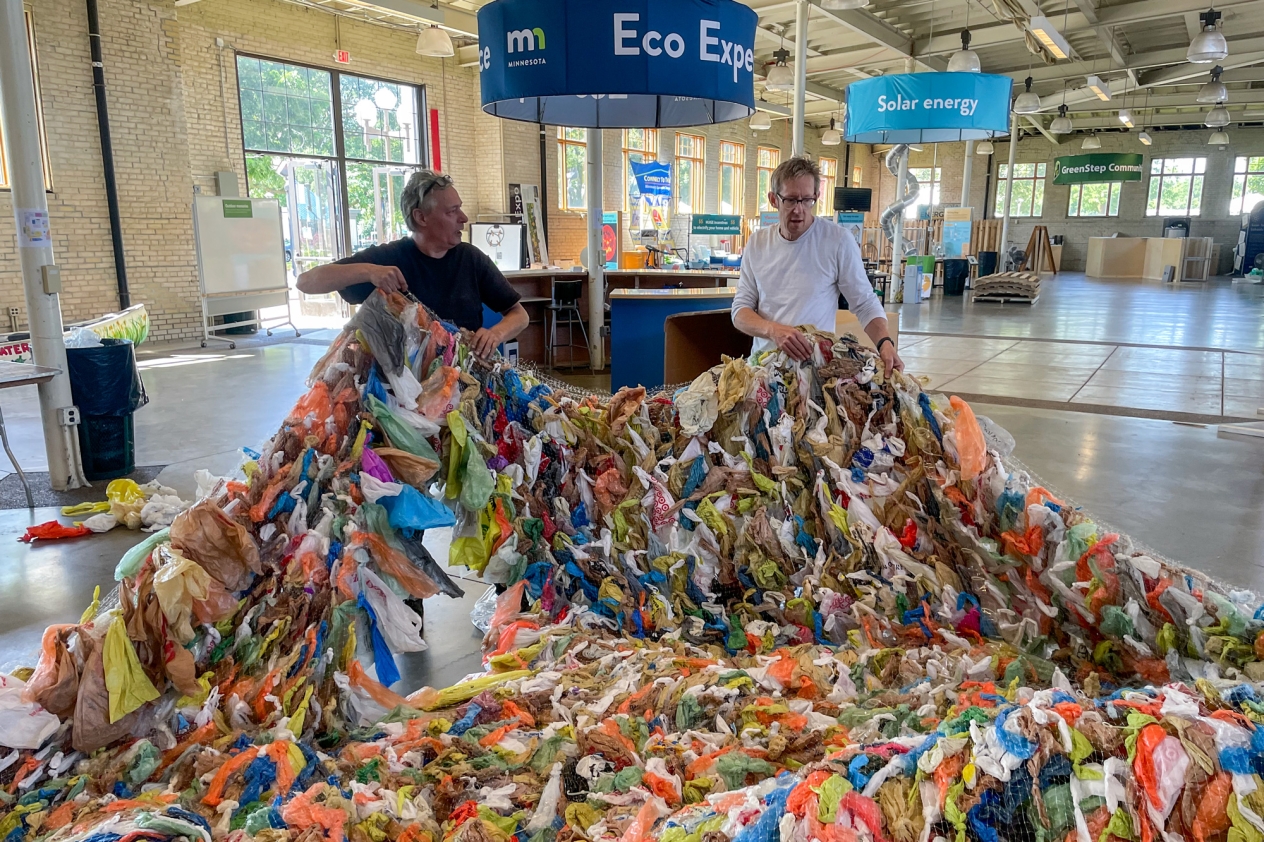
Spinning tornado of plastic bags highlights problems with plastic pollution
The fairgrounds are quiet in the leadup to the Minnesota State Fair. Birds sing, the seats have yet to be installed on the chair lift ride, and the hubbub of activity setting up root beer and fried pickle stands has barely begun. In the Eco Experience building, however, there’s a whirlwind — not a whirlwind of activity, but a whirlwind of plastic bags.
“It’s mesmerizing,” says Marc Scamp, the artist behind Bagnado, a 25-foot-tall funnel made up of hundreds, if not thousands, of single-use plastic shopping bags. “I’m getting kinda dizzy watching it.”
It twirls in front of Scamp, its tail hovering just above the concrete floor, as he dials in its speed. Some of the bags fill with air as they spin faster, the whole twister fluffs up, and the entire installation seems to take on a presence and personality as it dances in place.
Bagnado might be a hypnotic and eye-catching exhibit, but it’s also a portent of the perils of plastic pollution. Just as summer tornados ripping across the plains leave destruction in their wake, so too do plastic bags like those that make up Bagnado pose significant dangers to the environment.
Bagnado: The Origins!
Like a sequel to a blockbuster action flick, this year’s Bagnado is a follow-up to a previous appearance of the trashy tornado at Eco Experience in 2015. At the time, according to Jeff Stuhr, who runs Eco Experience for the MPCA, there was a big push in Minnesota to highlight plastic film pollution and to make reusable shopping bags more widely available.
“I remember we were sitting in a restaurant after the previous year’s fair, deciding what to do the next year, and we saw plastic bag floating around, catching in trees,” he said. “We looked at each other and came up with the idea to build a tornado of plastic bags.”
Getting enough bags for a huge tornado wasn’t difficult. Finding somebody willing to take on the project, however, was.
“It’s just a motor with a giant wheel, basically, but not to our knowledge had anybody done anything like it before,” Stuhr said.

Scamp was up for the challenge, though. The Minneapolis-based artist cut his teeth building whimsical motion displays for Dayton’s department stores, Holidazzle, and Bachman’s floral shows. His workshop in the Seward neighborhood is a riot of massive puppet animals, light-up tentacles, welding projects, and all forms of creative reuse of things diverted from the landfill.
“Hanging stuff over people’s heads makes you nervous, but people do it all the time,” he said. “I just had to make sure it doesn’t fly off and do tornado things in the building.”
Bagnado: The Danger!
Tornado things might seem the most obvious danger from a hundred pounds of plastic bags, but bags and other single-use plastic film and packaging do far more damage on a daily basis just about everywhere we look.

An estimated 22 million pounds of plastic pollution enters the Great Lakes every year, and plastic makes up most of the millions of tons of debris floating in our oceans, where marine life can get tangled up in it or ingest it. Plastic debris doesn’t go away, either; instead, it breaks down into microplastics that have been found in soil, surface water, wastewater, and in nearly every part of the human body.
In addition, cleaning up plastic bags can be costly: One study estimated that every plastic bag ever produced costs taxpayers 17 cents when workers collect and dispose of the bags, process them in landfills, and remove them from machinery in recycling facilities, where plastic bags can tangle sorting machines and cause fires.
Wayne Gjerde, the recycling market development coordinator for the MPCA, said the recycling rate for plastic bags and other film in Minnesota is low, about 10%.
"It's one of the larger things we throw away that we don't have a handle on," he said.
Preventing plastic bag pollution is as simple as declining the plastic bags at the end of the grocery store conveyor belt in favor of reusable shopping bags brought from home. For those with big wads of plastic grocery bags in the hall closet, many large retailers and grocery stores have specially designated bins to recycle the bags.
"If you don't need a bag, don't take one," he said.
To help combat plastic bag waste, the MPCA will give $5.3 million in grants over the next two years to companies developing recycling technology and new uses for recycled plastics.
Bagnado: The Return!
After Bagnado’s first run, Scamp held on to its motor and mechanism, which proved useful when it came time to resurrect it for this year’s Eco Experience. Scamp identified a number of places where he could rebuild it stouter, including a thicker steel mounting plate and a larger diameter shaft on which the whole thing spins.

The bags themselves, all tied to a plastic mesh, also came out of storage for this year’s exhibit. The amount of bags used for the tornado represents about five seconds’ worth of plastic bags and film thrown away in Minnesota. Laid out on the floor of the Eco Experience building prior to hanging from Scamp’s improved mechanism, they looked like a fishing net with the worst catch.
With the aid of multiple lifts, the entire assembly goes together without a hitch. As it hangs from the ceiling for the first time in nine years, it undulates with every touch like a massive jellyfish.
“It’s nice to see it live again,” Scamp says.
Eco Experience at the Minnesota State Fair takes place from Aug. 22 through Sept. 2.